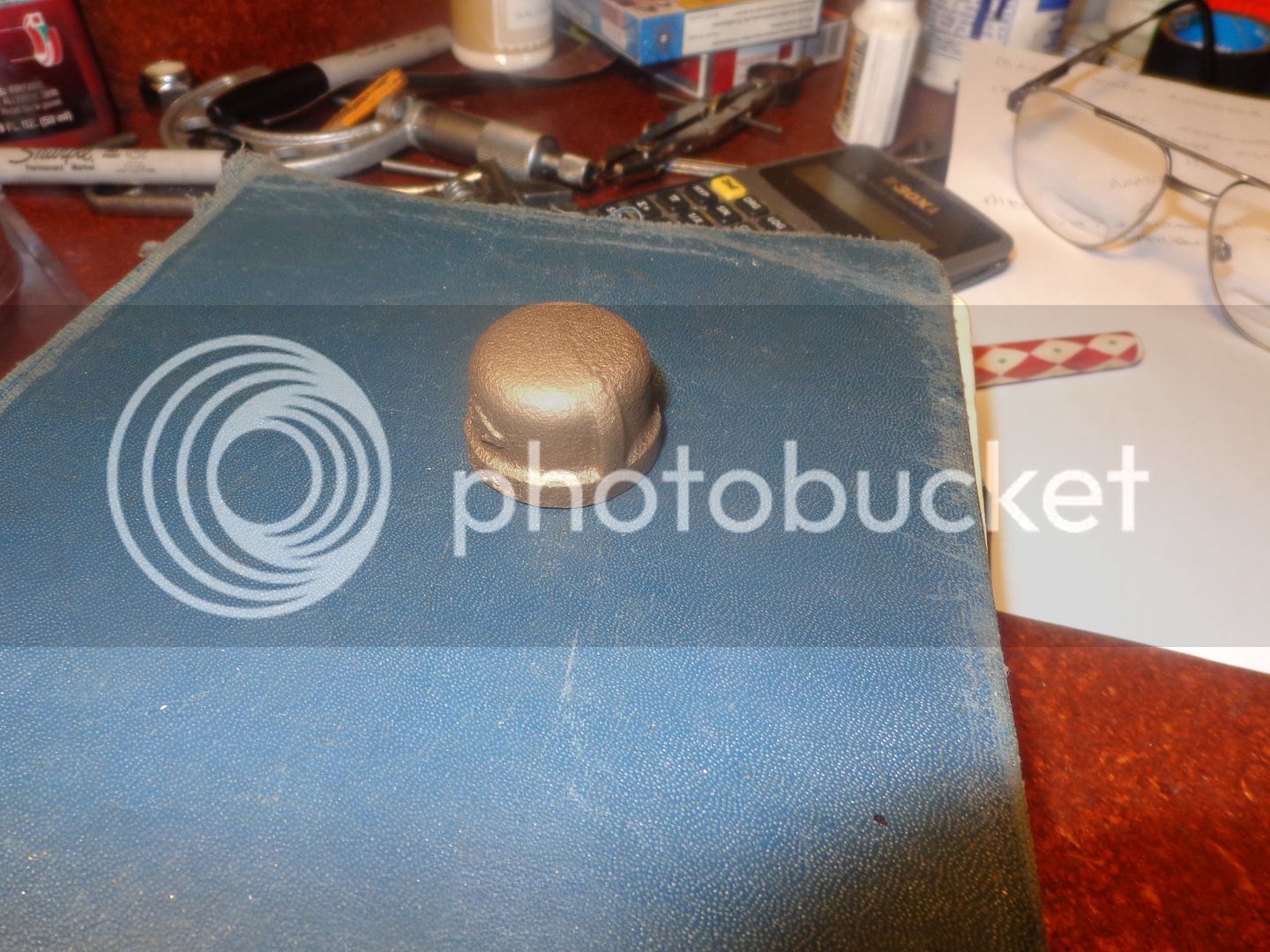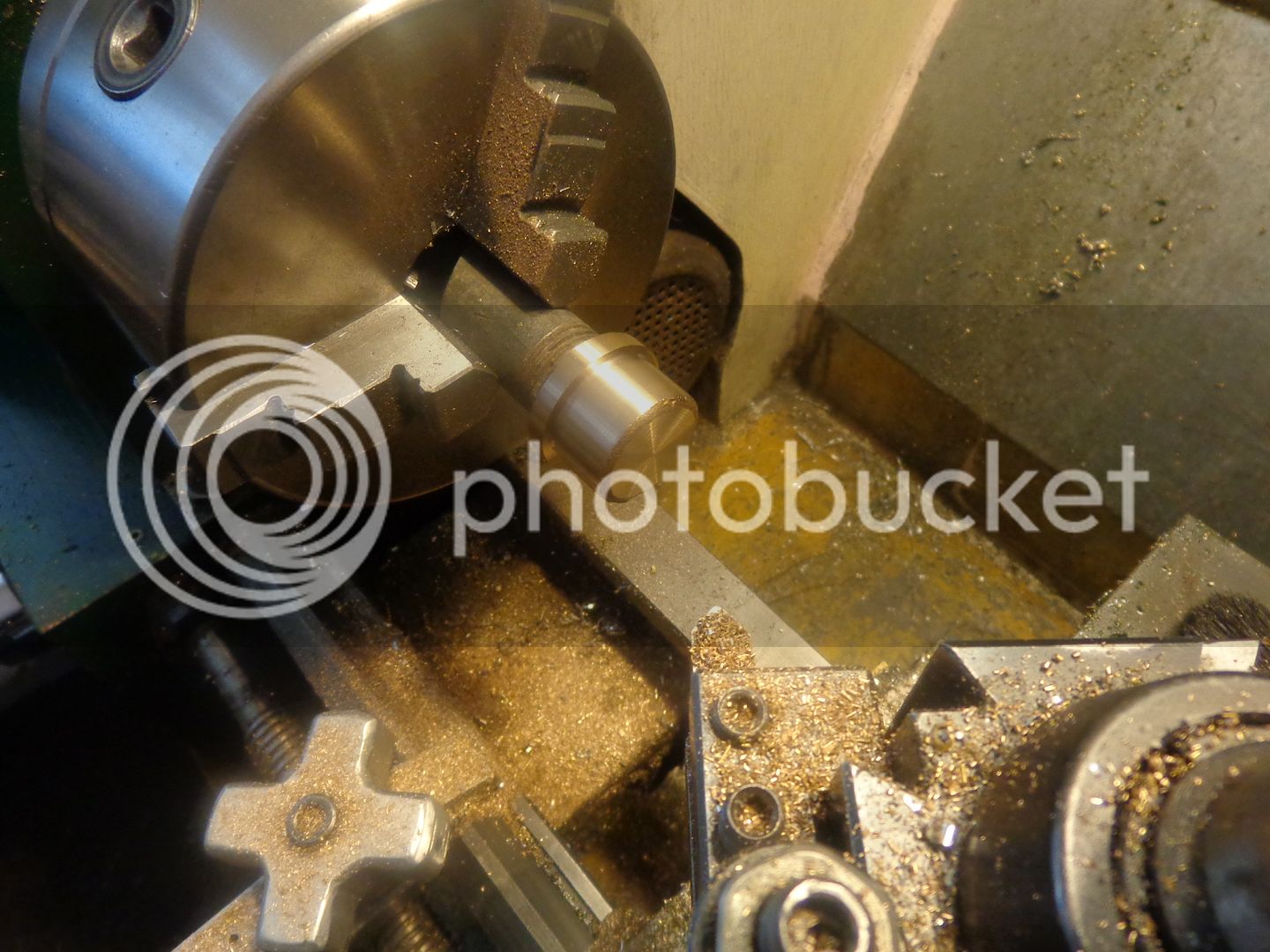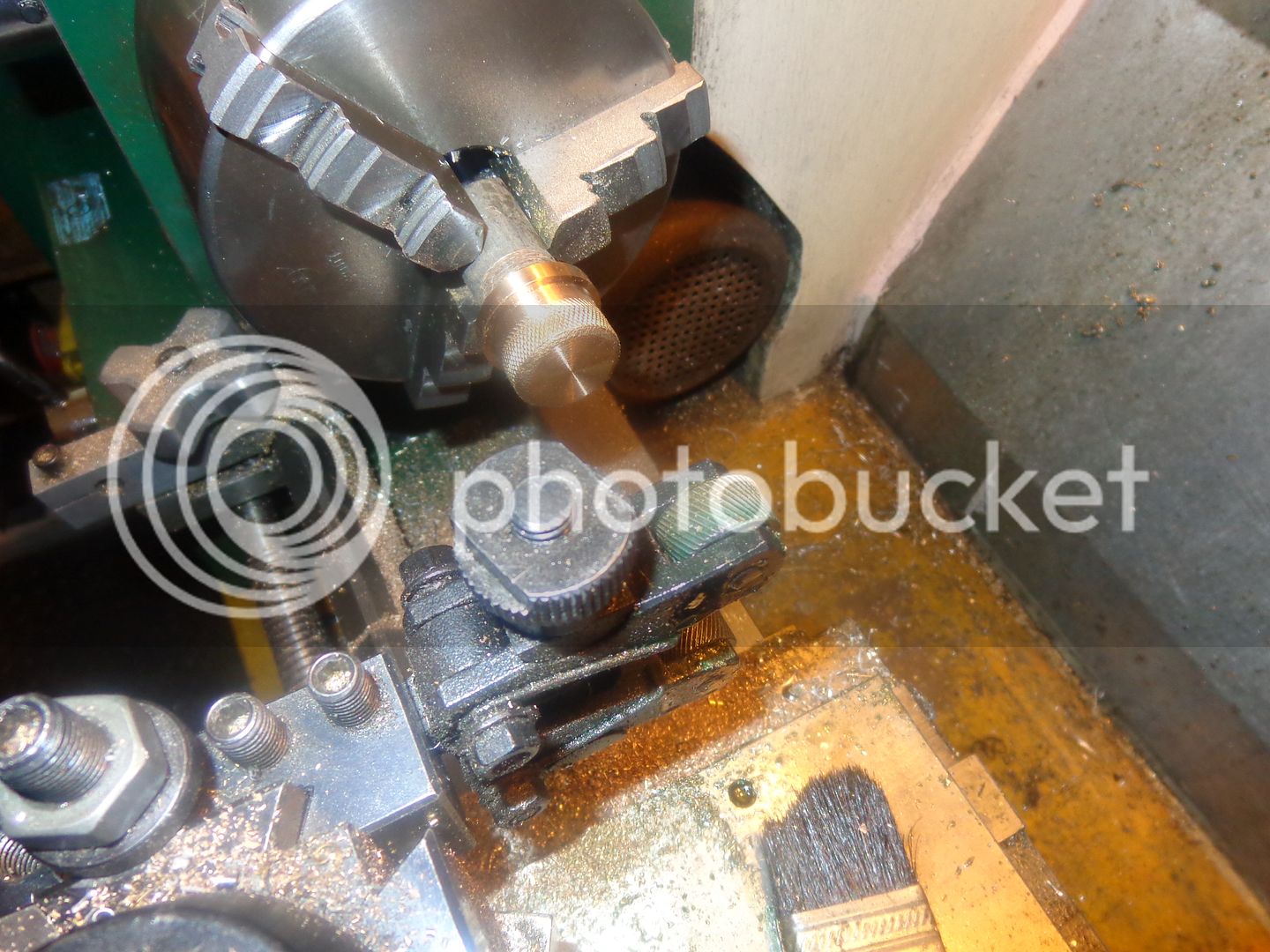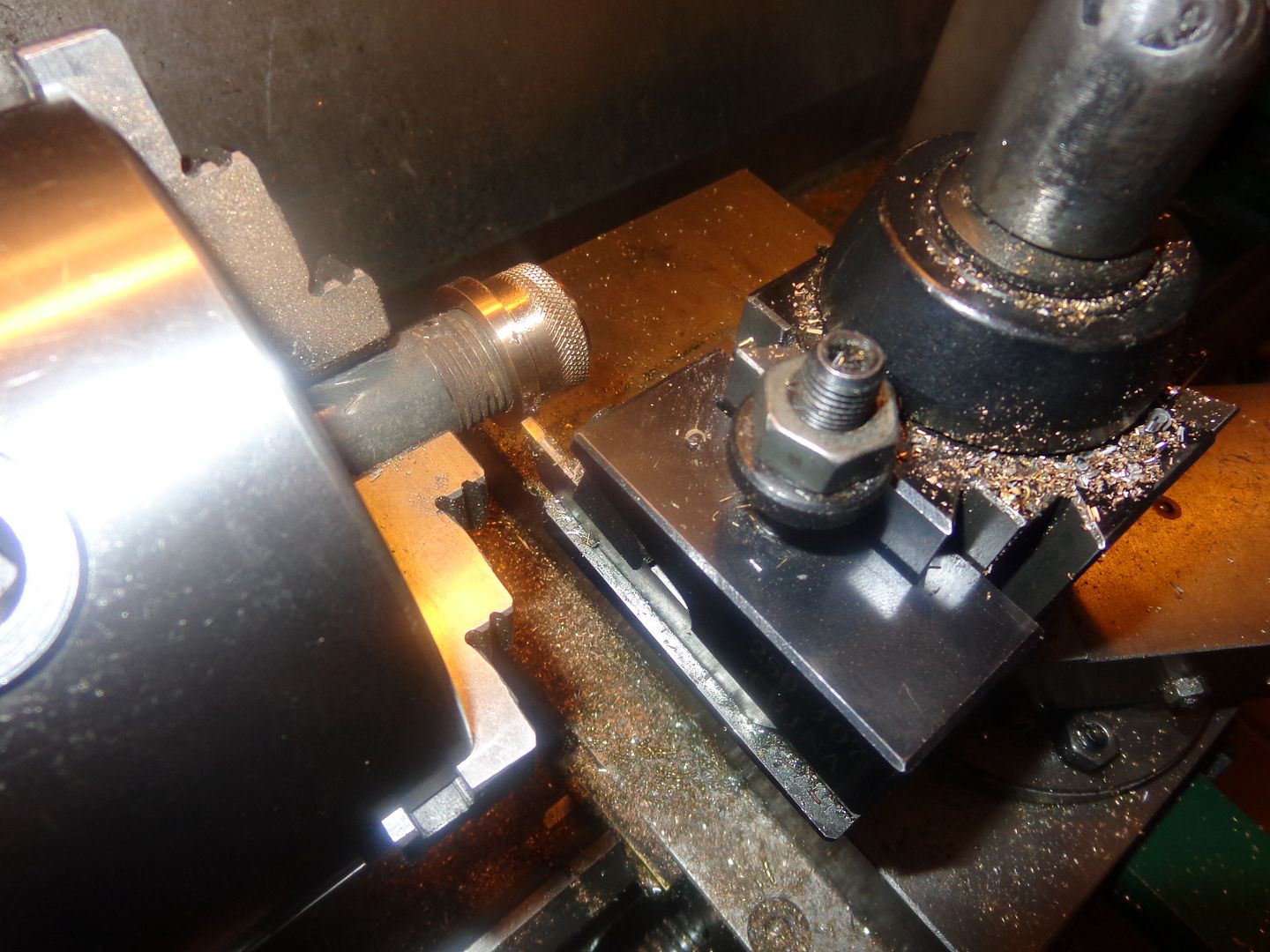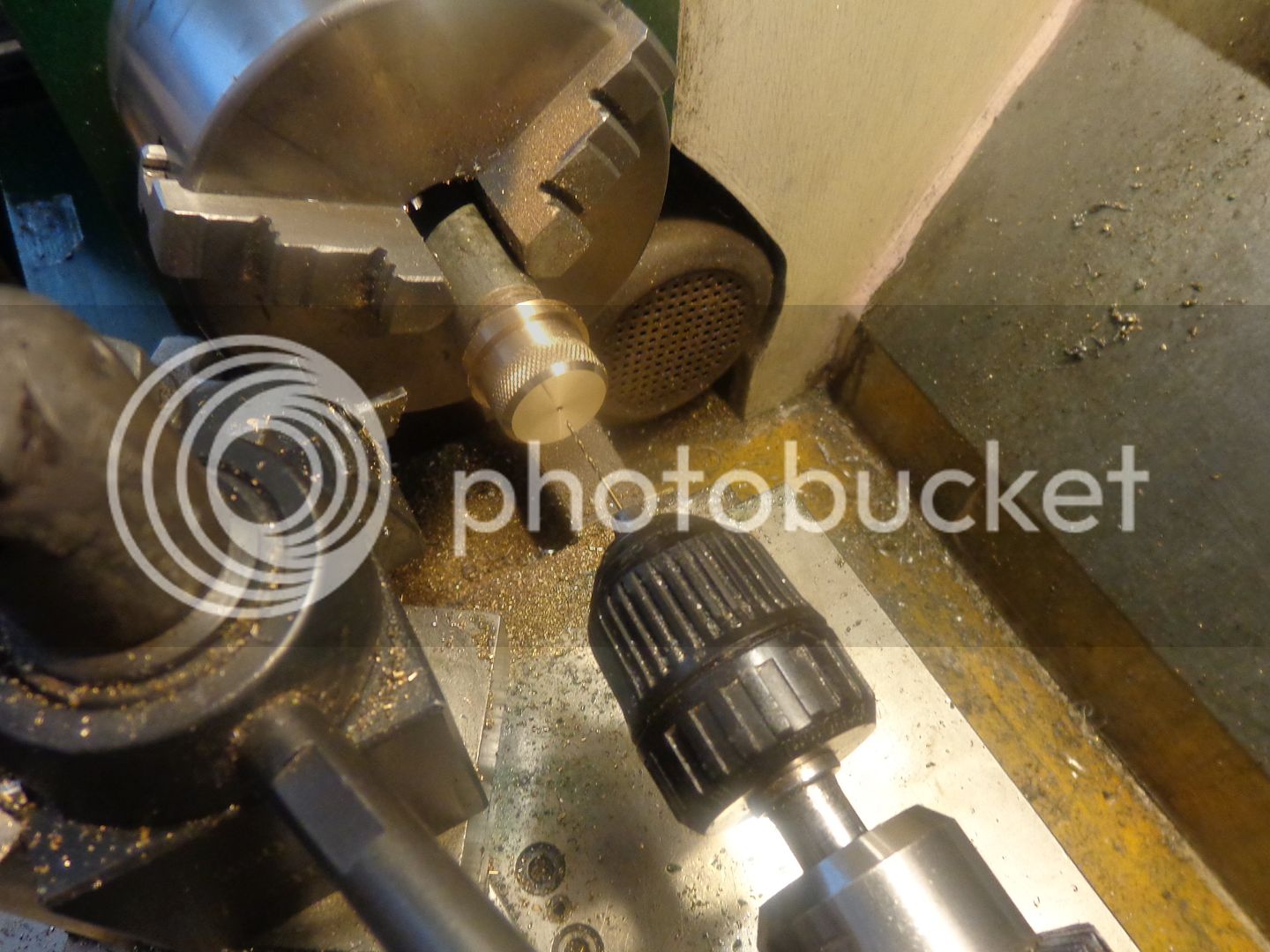When I first started to build i.c. engines, one of the issues that immediately came up was "What do I use for a gas tank, and how do I make a gas cap for the tank." I am not a fan of "pickle jars", as they break too easily, and there is always a great danger of a fire in the shop if this happens. I had a six foot length of brass thin-wall tubing from a recycled floor lamp, which seemed to be perfectly sized for a gas tank, and the beauty of it being brass was that I could solder to it. I tried a few different methods of machining a gas cap and filler neck, but since my largest tap was 3/8", it left me with a very small opening in the filler neck. The trouble with small filler neck openings is that you can never see how much fuel you are putting into the tank until the tank overflows, which again is a considerable fire hazard. Then one day, while browsing through pipe fittings at the local hardware store, I had a brain wave!!! If I used a standard threaded 1/2" pipe nipple, (which is 0.840" outside diameter x almost 5/8" i.d.) I could solder the nipple into the tank shell and use a purchased brass or bronze screw on cap with NPT threads. I found that the wall thickness on the short threaded pipe nipple has enough wall thickness to turn the threads off half of it to simplify soldering it into the tank shell. This picture shows one of these tanks with the pipe nipple soldered into it as a filler neck.


Last edited:





